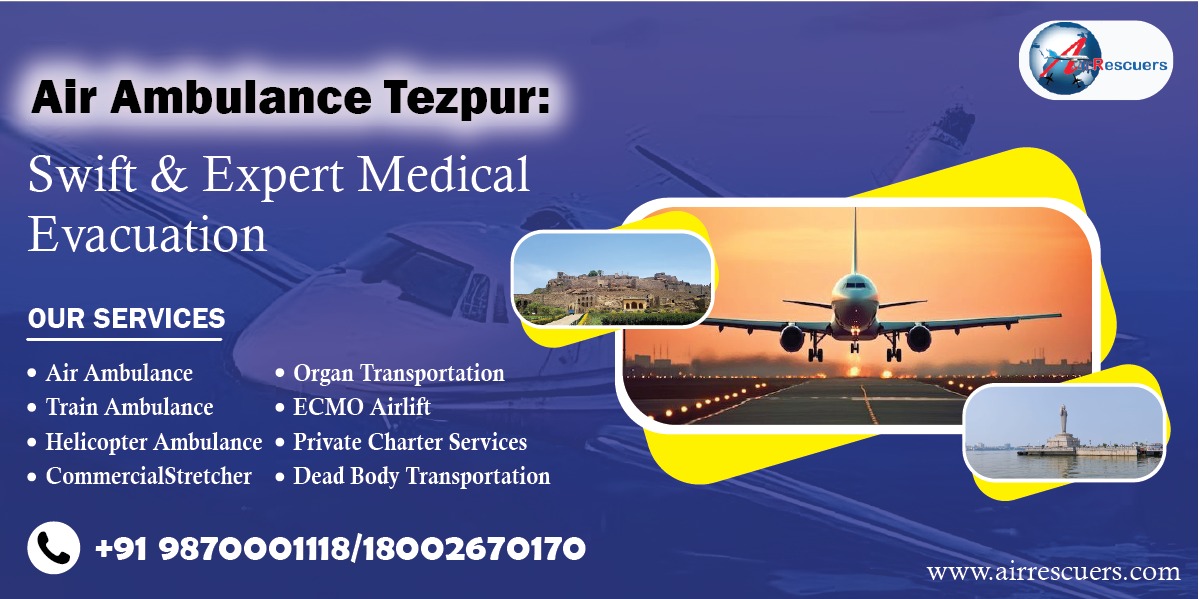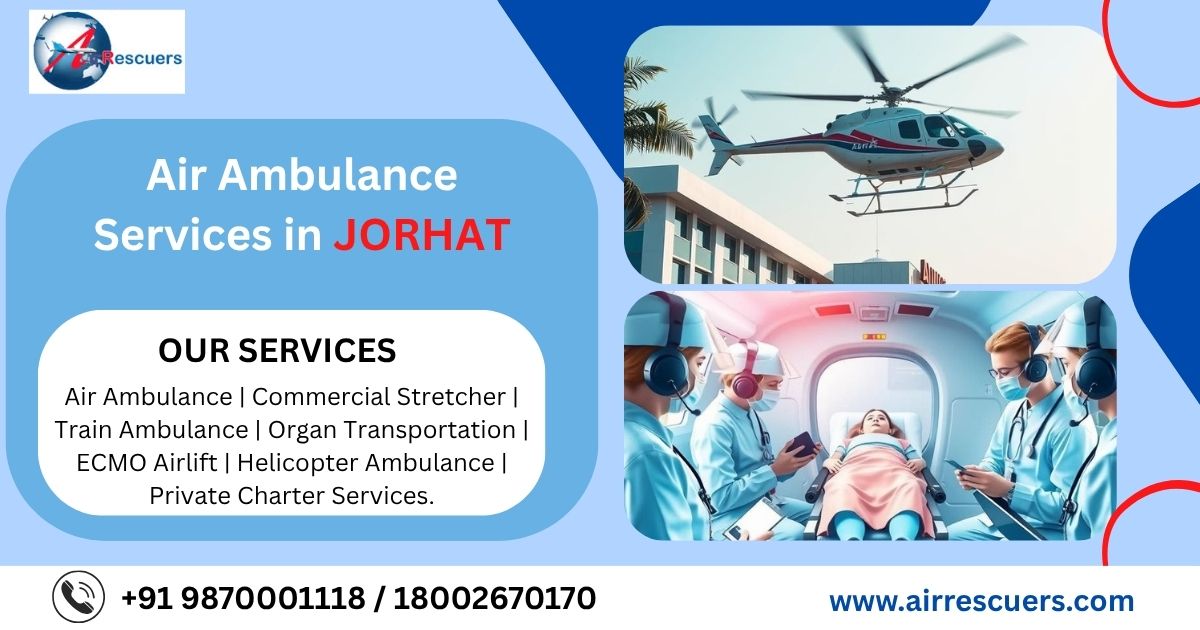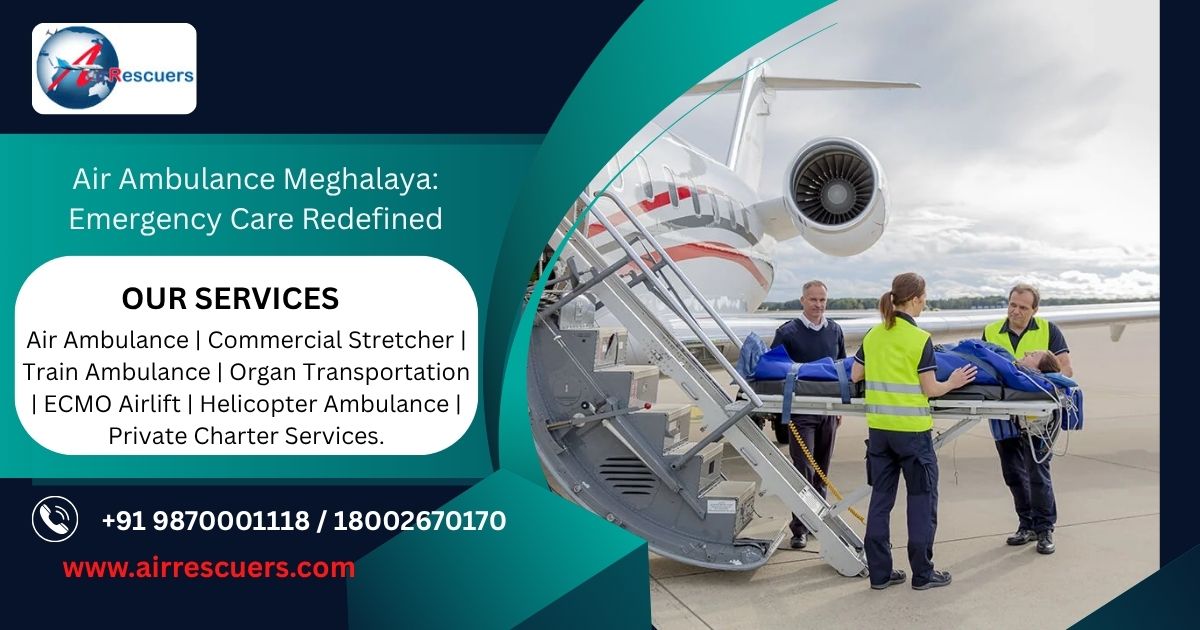Air Ambulance Services in Meghalaya: Rapid Medical Response in Challenging Terrain

Meghalaya, often called the “Abode of Clouds,” enchants with its fog-kissed hills, stunning waterfalls, and breathtaking natural scenery. However, beneath its breathtaking beauty lies a pressing challenge: access to timely healthcare in remote and hilly regions. With many towns and villages spread across mountainous terrain and thick forest cover, road connectivity is often limited or prone to disruption due to weather or landslides. This geographical reality makes conventional ground ambulances insufficient in emergencies. Air ambulance services in Meghalaya have emerged as a transformative solution to address this problem.
These services offer the ability to transport critically ill or injured individuals swiftly and safely, often bridging the gap between life and death.
The Importance of Air Ambulance Services in Meghalaya
Meghalaya’s population, particularly in rural areas, faces several obstacles when it comes to accessing specialized medical care. While urban centers like Shillong or Tura have moderate medical facilities, many serious health conditions demand advanced treatment that’s only available in cities like Guwahati, Kolkata, or Delhi.
In such urgent cases—whether it’s a heart attack, stroke, traumatic injury, premature delivery, or organ transplant—relying on ground transportation can result in precious time lost. Air ambulance services drastically reduce transit time and ensure that patients are treated without unnecessary delays.
How Air Ambulances Work
Air ambulances are specially designed and medically equipped aircraft (either helicopters or airplanes) that carry patients who require immediate and specialized care. These aircraft are not just a mode of transport; they function as flying emergency rooms or ICUs.
On board, one can find a full range of life-saving equipment such as:
Ventilators
Defibrillators
Cardiac monitors
Oxygen support
Emergency medication
Suction devices and more
Types of Air Ambulances Serving Meghalaya
Air ambulance services in Meghalaya generally fall into two categories:
1. Helicopter Ambulance
Helicopters are used for shorter distances and can land in restricted spaces. They're highly beneficial in reaching villages or remote areas that lack proper roads. These flights usually connect patients to hospitals within the state or nearby cities.
2. Fixed-Wing Aircraft Ambulance
Fixed-wing air ambulances (such as small jets or turboprops) are used for longer-distance transfers. Patients who need to be shifted from Meghalaya to metro hospitals for surgeries, advanced diagnostics, or transplant procedures are typically transported in these aircraft.
Both types are deployed based on urgency, location, and the patient’s condition.
When Air Ambulance Services Are Essential
There are specific medical and logistical scenarios where air ambulances become critical:
Severe Accidents: Victims of road accidents on slippery or broken roads.
Neurological Emergencies: Stroke or brain hemorrhage patients who require immediate intervention.
High-Risk Pregnancies: Complicated deliveries in rural areas without specialist care.
Child and Neonatal Cases: Newborns or infants with critical conditions that require NICU transfers.
Natural Disasters or Flooding: Evacuation of injured people during landslides or severe monsoons.
How the Process Works
Many are surprised to find how seamless and efficient the air ambulance transfer process can be. Here’s a breakdown of how it usually works in Meghalaya:
Initial Contact: A distress call or inquiry is made to the service provider.
Medical Evaluation: The patient’s condition is assessed remotely to determine equipment and team needed.
Coordination: Flight permissions, hospital coordination, and ground ambulance arrangements are handled by the provider.
Transportation: begins with a ground ambulance retrieving the patient, followed by a transfer to the airstrip or helipad, and a swift flight to the designated medical facility for continued care.
Handover: On landing, the medical team transfers the patient to the destination hospital.
This end-to-end service ensures minimal hassle for the patient’s family.
Benefits of Air Ambulance Services in Meghalaya
Time-Saving: Rapid transport in emergencies, especially from remote or tribal areas to specialized hospitals.
Access to Quality Care: Enables patients to reach top-tier medical institutions that may not exist in the region.
Professional Medical Support: Onboard doctors and life-saving gear provide ICU-level care throughout the journey.
Versatility in Emergencies: Useful during natural disasters, epidemics, or public health emergencies.
Safe and Controlled Environment: Maintains stability for patients in critical condition.
Cost Factors and Accessibility
Although air ambulance services provide unparalleled speed and efficiency, they are frequently viewed as a costly mode of emergency medical transport. In Meghalaya, the cost depends on several variables:
Distance to be covered (intrastate or inter-state)
Type of aircraft used
Level of medical care required onboard
Time of operation (night or emergency flights may cost more)
Helicopter flights within the state might range from ₹2.5 lakh to ₹6 lakh, while long-haul fixed-wing flights to Delhi or Mumbai could go up to ₹12–20 lakh. Some insurance plans cover such services, and certain government schemes for NGOs may offer support for financially vulnerable families.
Leading Providers of Air Ambulance Services in Meghalaya
Several reputable organizations now offer air ambulance services in and around Meghalaya, making it easier for residents to access critical care. Among them, Air Rescuers is recognized for its reliable operations in the Northeast region. With medically equipped aircraft and skilled personnel, they provide efficient and safe transport, even from challenging terrains like Cherrapunji, Nongstoin, or Williamnagar.
Government Support and Future Outlook
The Meghalaya government has shown growing interest in improving emergency healthcare infrastructure. Collaborations with private operators, helipad construction, and regional emergency response plans are being explored.
Furthermore, as the state strengthens telemedicine, emergency helpline systems, and trauma centers, air ambulance integration will play a pivotal role in offering holistic critical care support—especially in tribal and underdeveloped regions.
Conclusion
They enable timely medical intervention and help bridge the gap between rural communities and advanced urban healthcare. Though challenges like affordability and awareness remain, the increasing availability and growing recognition of air ambulances signal a promising shift in emergency response capabilities.
As technology improves and partnerships between the public and private sectors strengthen, air ambulances are expected to become a standard part of Meghalaya’s healthcare landscape—saving lives, one flight at a time.
Note: IndiBlogHub features both user-submitted and editorial content. We do not verify third-party contributions. Read our Disclaimer and Privacy Policyfor details.







